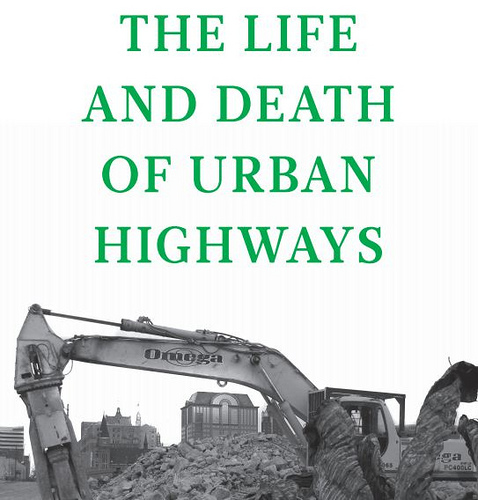 The Interstate highway system through the City of St. Louis was planned, and largely executed in the context of planning for 1,000,000 city residents. They were celebrated. “St. Louisans will drive downtown in half the time with these New Multilane Freeways.” They were simply built for another time and place. A new report details several examples of highway conversions and their benefits. One line sums up the issue better than any other: “While the following report is about urban highways, more importantly, it is about cities and people.” And in St. Louis currently it’s about maintaining the infrastructure status quo, building more and doing it without community involvement.
The Interstate highway system through the City of St. Louis was planned, and largely executed in the context of planning for 1,000,000 city residents. They were celebrated. “St. Louisans will drive downtown in half the time with these New Multilane Freeways.” They were simply built for another time and place. A new report details several examples of highway conversions and their benefits. One line sums up the issue better than any other: “While the following report is about urban highways, more importantly, it is about cities and people.” And in St. Louis currently it’s about maintaining the infrastructure status quo, building more and doing it without community involvement.
Press Release: If the twentieth century was known for building highways, the twenty-first century may be known for tearing them down. A new report jointly produced by the Institute for Transportation and Development Policy and EMBARQ, The Life and Death of Urban Highways, re-appraises the specific conditions under which it makes sense to build urban highway and when it makes sense to tear them down.
After decades of building and maintaining urban highways, many cities are choosing to tear them down rather than repair or maintain them. Five such cities are showcased in this report: Portland, Oregon; San Francisco, California; Milwaukee, Wisconsin; Seoul, South Korea; and Bogotá, Colombia. These cities demonstrate the social, economic, and environmental benefits that accrued when urban highways were removed and reconsidered.
As Peter Park, former planning director of Milwaukee during the Park East Freeway removal, writes in the foreword, “While the following report is about urban highways, more importantly, it is about cities and people. It is about community vision and the leadership required in the twenty-first century to overcome the demolition, dislocation, and disconnection of neighborhoods caused by freeways in cities.”
In the past fifty years, tens of thousands of miles of urban highways were built around the world. Many are now approaching the end of their life cycle. This is leading many cities, not just in the United States, to question the place of major highways in urban areas and whether they merit further investment or removal. Today, some of the same urban highways that were built in that period are being torn down, buried at great expense, or changed into boulevards. As cities around the world grapple with congestion, growth, and decline, the case studies highlighted in this groundbreaking report illuminate what can be done when a highway no longer makes sense.
The Life and Death of Urban Highways


{current conditions – I-70 downtown St. Louis}

{current proposed solution to increase connectivity by CityArchRiver}

{City to River site plan showing urban boulevard and “lid” at the Gateway Mall}


